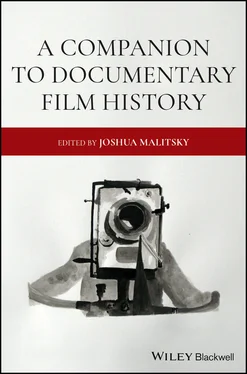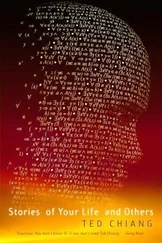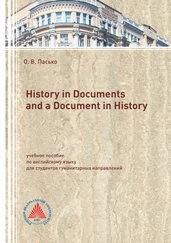In linking these two spaces, the film also linked groups of people and institutions at the stage of production. African political figures played a crucial, still unappreciated role in the making of the film, and there is evidence of the film’s West African contacts’ own violation of the Laval Decree that clarifies our sense of the documentary’s challenge to colonial authority and the film’s relevance to histories of authorship in African diasporic documentary. The colonial police placed Vautier and Vogel under extensive surveillance, and the administration was especially concerned with tracking the young filmmakers’ interactions with the RDA, as is revealed in bureaucratic correspondence between officials in the Political Affairs Bureau of the Ministry of the Colonies. A Political Affairs Bureau letter from February 1950 contains a police account of the Vautier‐Vogel activities and portrays their meetings with leaders and village chiefs throughout their French West African tour as a direct challenge to the authority of the colonial administration. 8 Among Vogel and Vautier’s main contacts were the RDA’s founders and assembly representatives, Gabriel D’Arboussier and Félix Houphouët‐Boigny, as well as Ouezzin Coulibaly (the assembly deputy from Côte d’Ivoire, and the representative of the African section of the League of Teaching), who helped Vautier obtain resources and an additional camera. Coulibaly is even identified in the surveillance report as having shot and “directed” some film footage himself (“prises de vues dirigées par un OUEZZIN COULIBALY”). This line in the colonial state surveillance report remains the only evidentiary trace of this unauthorized African filmmaking activity, and it is not corroborated by Vautier’s memoirs or by Coulibaly’s own writings. It furthermore remains unknown whether particular pieces of footage shot by Coulibaly survived as part of the finished work. 9 Afrique 50 only bears Vautier’s directing credit, whether for reasons of shielding any West African collaborators from being exposed to prosecution or on the principle that it was a work for which only he could claim final artistic responsibility. 10 Nevertheless, by Vautier’s account, these political leaders, especially Coulibaly, and the RDA party organization, played significant roles in the film’s production and provided crucial support, protection, and guidance. This newly available evidence for Coulibaly’s previously obscured filmmaking role allows one to further define this anticolonial documentary work as emerging from black African collaboration in and outside of the colonial territories. The report’s identification of Ouezzin Coulibaly shows that authorities regarded as a serious political threat the prospect of any film production by colonial subjects, who had recently attained, in the postwar French Union order, the uncertain second‐class status of imperial citizens and formed political parties.
On a textual level, in its construction and rhetorical strategy, the film Afrique 50 culminates by calling the viewer to join in solidarity with the active resistance to a violent colonial administration that is already mobilizing in Africa as well as in France, linked through a closing montage of two political demonstrations, one in metropolitan France and one in French West Africa. This parallel defines the film’s closing refrain listing capital cities: “From Abidjan to Niamey, from Dakar to Brazzaville, the people of France and the people of Africa are shoulder to shoulder, and the African people will hold this place in the common struggle over and against all opposition, until the battle of life has been won.” In fact, in a gesture that would become a motif of militant documentary, the closing montage of Afrique 50 reuses a piece of footage from the final demonstration sequence of La Grande Lutte des mineurs – a 1948 film by Louis Daquin – that serves as an image of the “people of France.” Vautier cross‐cuts from a shot of colonial subjects marching in French West Africa to a medium close‐up panning shot of a black man (wearing a black beret) and an older white woman, marching arm and arm to the Internationale during a metropolitan miners’ strike. This emblematic scene of cross‐racial and inter‐generational labor alliance is inserted to complete a cinematic figuration of border‐crossing metropolitan‐colonial solidarity.
In concert with this montage work, the film’s use of sound, both its voice‐over and its recorded music, departed considerably from the rhetoric and texture defining conventions of state‐sponsored colonial documentaries. Early in the film, Vautier’s self‐recorded voice‐over acknowledges metropolitan spectators’ presumed familiarity with official colonial propaganda: “This is not the official image of colonization, my friends. Colonization here, as it is everywhere, is the reign of vultures.” The film offers a critique of the conventional form of state‐modernist documentary and its authoritative voice‐over by presenting unofficial images of life under colonial rule to the viewer and by anchoring these images in Vautier’s explanatory narration that points to the location of shooting yet also generalizes from the site he is speaking from (linking here to everywhere). 11 Phrased in this way, the statement represents the larger project’s model of truth in the medium of documentary filmmaking and its claims to correct dominant modes of representing colonial social and political life in Africa. In the voice of the intellectual as filmmaker, Vautier readily speaks of a true image that replaces a false one. 12
At the same time that the film explicitly articulates this aim to correct official representations and provide documentary evidence of reality, it embodies this stance in the material quality, tone, and rhythm of the film’s sound. Vautier’s untrained, partially improvised voice‐over brings to the film a rapid delivery and a tone of impassioned anger that function in the text as signs of urgency and determined engagement. For example, especially in the final third of the film, Vautier’s phrasing grows insistent and accelerates as he declaims litanies of martyrs and condemns the administration for a mounting series of shootings, abductions, and massacres, leaving ruins. Vautier’s voice‐over represents the voice of any lone French citizen embracing the anticolonial cause and draws on an apparent poverty of means that becomes the vocalization of unpolished, rough craft. As in political activist speechmaking, the exclamations and even strident tonality of the voice‐over represent the stance of partisan countermobilization decrying exploitation, marking not impersonal analysis but rather a form of distinctive personal participation in that action. The improvised performance of the voice‐over and the crude texture of the work also indicate the priority accorded to documenting the event of the filmmaker’s encounter and to refusing to work in professional, institutional contexts. The film adopts these impoverished and small‐scale aesthetic attributes as badges of authenticity that attest to the truth of its production.
Furthermore, on the soundtrack, there was a political aspect evident not only in the selection of West African music and cultural forms and producers (by way of Paris) but also in the acts of collective performance, gathering, and solidarity their recording required. Vautier recruited Keita Fodéba, the Guinean‐born founder and leader of the Ballets Africains since 1947 in Paris. Vautier and Fodéba had musicians from this ensemble record the music for the soundtrack with the screening of a silent work print of the film during an open‐air concert for 600 attendees, in front of the Confédération Générale du Travail’s Maison du Peuple in the working‐class Paris suburb of Argenteuil.
Читать дальше












